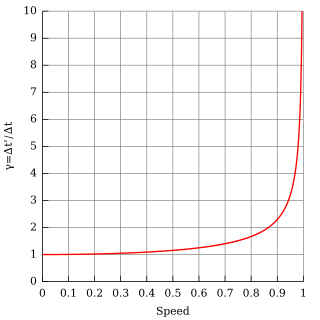Related Research Articles

A muon is an elementary particle similar to the electron, with an electric charge of −1 e and a spin of 1⁄2, but with a much greater mass. It is classified as a lepton. As with other leptons, the muon is not known to have any sub-structure – that is, it is not thought to be composed of any simpler particles.

In particle physics, a lepton is an elementary particle of half-integer spin that does not undergo strong interactions. Two main classes of leptons exist: charged leptons, and neutral leptons. Charged leptons can combine with other particles to form various composite particles such as atoms and positronium, while neutrinos rarely interact with anything, and are consequently rarely observed. The best known of all leptons is the electron.

A photocathode is a surface engineered to convert light (photons) into electrons using the photoelectric effect. Photocathodes are important in accelerator physics where they are utilised in a photoinjector to generate high brightness electron beams. Electron beams generated with photocathodes are commonly used for free electron lasers and for ultrafast electron diffraction. Photocathodes are also commonly used as the negatively charged electrode in a light detection device such as a photomultiplier or phototube.

ATLAS is the largest general-purpose particle detector experiment at the Large Hadron Collider (LHC), a particle accelerator at CERN in Switzerland. The experiment is designed to take advantage of the unprecedented energy available at the LHC and observe phenomena that involve highly massive particles which were not observable using earlier lower-energy accelerators. ATLAS was one of the two LHC experiments involved in the discovery of the Higgs boson in July 2012. It was also designed to search for evidence of theories of particle physics beyond the Standard Model.
The International Muon Ionization Cooling Experiment is a high energy physics experiment at the Rutherford Appleton Laboratory. The experiment is a recognized CERN experiment (RE11). MICE is designed to demonstrate ionization cooling of muons. This is a process whereby the emittance of a beam is reduced in order to reduce the beam size, so that more muons can be accelerated in smaller aperture accelerators and with fewer focussing magnets. This might enable the construction of high intensity muon accelerators, for example for use as a Neutrino Factory or Muon Collider.

Gargamelle was a heavy liquid bubble chamber detector in operation at CERN between 1970 and 1979. It was designed to detect neutrinos and antineutrinos, which were produced with a beam from the Proton Synchrotron (PS) between 1970 and 1976, before the detector was moved to the Super Proton Synchrotron (SPS). In 1979 an irreparable crack was discovered in the bubble chamber, and the detector was decommissioned. It is currently part of the "Microcosm" exhibition at CERN, open to the public.

The LHCb experiment is one of eight particle physics detector experiments collecting data at the Large Hadron Collider at CERN. LHCb is a specialized b-physics experiment, designed primarily to measure the parameters of CP violation in the interactions of b-hadrons. Such studies can help to explain the matter-antimatter asymmetry of the Universe. The detector is also able to perform measurements of production cross sections, exotic hadron spectroscopy, charm physics and electroweak physics in the forward region. The LHCb collaboration, who built, operate and analyse data from the experiment, is composed of approximately 1260 people from 74 scientific institutes, representing 16 countries. Chris Parkes succeeded on July 1, 2020 as spokesperson for the collaboration to Giovanni Passaleva. The experiment is located at point 8 on the LHC tunnel close to Ferney-Voltaire, France just over the border from Geneva. The (small) MoEDAL experiment shares the same cavern.
Particle identification is the process of using information left by a particle passing through a particle detector to identify the type of particle. Particle identification reduces backgrounds and improves measurement resolutions, and is essential to many analyses at particle detectors.

The AWAKE facility at CERN is a proof-of-principle experiment, which investigates wakefield plasma acceleration using a proton bunch as a driver, a world-wide first. It aims to accelerate a low-energy witness bunch of electrons from 15 to 20 MeV to several GeV over a short distance (10m) by creating a high acceleration gradient of several GV/m. Particle accelerators currently in use, like CERN's LHC, use standard or superconductive RF-cavities for acceleration, but they are limited to an acceleration gradient in the order of 100 MV/m.

Muon spin spectroscopy, also known as µSR, is an experimental technique based on the implantation of spin-polarized muons in matter and on the detection of the influence of the atomic, molecular or crystalline surroundings on their spin motion. The motion of the muon spin is due to the magnetic field experienced by the particle and may provide information on its local environment in a very similar way to other magnetic resonance techniques, such as electron spin resonance and, more closely, nuclear magnetic resonance (NMR).

The Collider Detector at Fermilab (CDF) experimental collaboration studies high energy particle collisions from the Tevatron, the world's former highest-energy particle accelerator. The goal is to discover the identity and properties of the particles that make up the universe and to understand the forces and interactions between those particles.

ALICE is one of eight detector experiments at the Large Hadron Collider at CERN. The other seven are: ATLAS, CMS, TOTEM, LHCb, LHCf, MoEDAL and FASER.

Time dilation as predicted by special relativity is often verified by means of particle lifetime experiments. According to special relativity, the rate of a clock C traveling between two synchronized laboratory clocks A and B, as seen by a laboratory observer, is slowed relative to the laboratory clock rates. Since any periodic process can be considered a clock, the lifetimes of unstable particles such as muons must also be affected, so that moving muons should have a longer lifetime than resting ones. A variety of experiments confirming this effect have been performed both in the atmosphere and in particle accelerators. Another type of time dilation experiments is the group of Ives–Stilwell experiments measuring the relativistic Doppler effect.

In accelerator physics, emittance is a property of a charged particle beam. It refers to the area occupied by the beam in a position-and-momentum phase space.
Stochastic cooling is a form of particle beam cooling. It is used in some particle accelerators and storage rings to control the emittance of the particle beams in the machine. This process uses the electrical signals that the individual charged particles generate in a feedback loop to reduce the tendency of individual particles to move away from the other particles in the beam.

The NA58 experiment, or COMPASS is a 60-metre-long fixed-target experiment at the M2 beam line of the SPS at CERN. The experimental hall is located at the CERN North Area, close to the French village of Prévessin-Moëns. The experiment is a two-staged spectrometer with numerous tracking detectors, particle identification and calorimetry. The physics results are extracted by recording and analysing the final states of the scattering processes. The versatile set-up, the use of different targets and particle beams allow the investigation of various processes. The main physics goals are the investigation of the nucleon spin structure and hadron spectroscopy. The collaboration consists of 220 physicists from 13 different countries, involving 28 universities and research institutes.
A Muon Collider is a proposed particle accelerator facility in its conceptual design stage that collides muon beams for precision studies of the Standard Model and for direct searches of new physics. Muons belong to the second generation of leptons, they are typically produced in high-energy collisions either naturally or artificially. The main challenge of such a collider is the short lifetime of muons.
The index of physics articles is split into multiple pages due to its size.

Luigi Di Lella is an Italian experimental particle physicist. He has been a staff member at CERN for over 40 years, and has played an important role in major experiments at CERN such as CAST and UA2. From 1986 to 1990 he acted as spokesperson for the UA2 Collaboration, which, together with the UA1 Collaboration, discovered the W and Z bosons in 1983.
In accelerator physics, the mean transverse energy (MTE) is a quantity that describes the average transverse momentum of a beam. While the quantity has a defined value for any particle beam, it is generally used in the context of photoinjectors for electron beams.
References
- ↑ G.I. Budker, in: Proceedings of 15th International Conference on High Energy Physics, Kiev, 1970
- ↑ A.N. Skrinsky, Intersecting storage rings at Novosibirsk, in: Proceedings of Morges Seminar, 1971 Report CERN/D.PH II/YGC/mng
- ↑ https://micewww.pp.rl.ac.uk/projects/mice/wiki/For_the_public%5B%5D%5B%5D
- ↑ Bogomilov, M.; Tsenov, R.; Vankova-Kirilova, G.; Song, Y. P.; Tang, J. Y.; Li, Z. H.; Bertoni, R.; Bonesini, M.; Chignoli, F.; Mazza, R.; Palladino, V.; de Bari, A.; Orestano, D.; Tortora, L.; Kuno, Y.; Sakamoto, H.; Sato, A.; Ishimoto, S.; Chung, M.; Sung, C. K.; Filthaut, F.; Jokovic, D.; Maletic, D.; Savic, M.; Jovancevic, N.; Nikolov, J.; Vretenar, M.; Ramberger, S.; Asfandiyarov, R.; Blondel, A.; Drielsma, F.; Karadzhov, Y.; Boyd, S.; Greis, J. R.; Lord, T.; Pidcott, C.; Taylor, I.; Charnley, G.; Collomb, N.; Dumbell, K.; Gallagher, A.; Grant, A.; Griffiths, S.; Hartnett, T.; Martlew, B.; Moss, A.; Muir, A.; Mullacrane, I.; Oates, A.; Owens, P.; Stokes, G.; Warburton, P.; White, C.; Adams, D.; Bayliss, V.; Boehm, J.; Bradshaw, T. W.; Brown, C.; Courthold, M.; Govans, J.; Hills, M.; Lagrange, J.-B.; Macwaters, C.; Nichols, A.; Preece, R.; Ricciardi, S.; Rogers, C.; Stanley, T.; Tarrant, J.; Tucker, M.; Watson, S.; Wilson, A.; Bayes, R.; Nugent, J. C.; Soler, F. J. P.; Chatzitheodoridis, G. T.; Dick, A. J.; Ronald, K.; Whyte, C. G.; Young, A. R.; Gamet, R.; Cooke, P.; Blackmore, V. J.; Colling, D.; Dobbs, A.; Dornan, P.; Franchini, P.; Hunt, C.; Jurj, P. B.; Kurup, A.; Long, K.; Martyniak, J.; Middleton, S.; Pasternak, J.; Uchida, M. A.; Cobb, J. H.; Booth, C. N.; Hodgson, P.; Langlands, J.; Overton, E.; Pec, V.; Smith, P. J.; Wilbur, S.; Ellis, M.; Gardener, R. B. S.; Kyberd, P.; Nebrensky, J. J.; DeMello, A.; Gourlay, S.; Lambert, A.; Li, D.; Luo, T.; Prestemon, S.; Virostek, S.; Palmer, M.; Witte, H.; Adey, D.; Bross, A. D.; Bowring, D.; Liu, A.; Neuffer, D.; Popovic, M.; Rubinov, P.; Freemire, B.; Hanlet, P.; Kaplan, D. M.; Mohayai, T. A.; Rajaram, D.; Snopok, P.; Torun, Y.; Cremaldi, L. M.; Sanders, D. A.; Summers, D. J.; Coney, L. R.; Hanson, G. G.; Heidt, C. (February 2020). "Demonstration of cooling by the Muon Ionization Cooling Experiment". Nature. 578 (7793): 53–59. Bibcode:2020Natur.578...53M. doi:10.1038/s41586-020-1958-9. PMC 7039811 . PMID 32025014.
- ↑ Ryne, Robert D. (February 2020). "Muon colliders come a step closer". Nature. 578 (7793): 44–45. Bibcode:2020Natur.578...44R. doi:10.1038/d41586-020-00212-3. PMID 32025006. S2CID 211038886.